Ocellaris Clownfish
The Ocellaris Clownfish, Amphiprion ocellaris, is the most well-known orange saltwater fish around the world. It has been the icon of the saltwater hobby for a long period of time, constantly depicted on magazine covers, in books, as logos on t-shirts and many other promotional mediums. Its popularity began to rise when it was featured in the 2003 film titled Finding Nemo.
- Experience Level: Beginner
- Hardiness: Very Hardy
- Minimum Tank Size: 10 gal (38 L)
- Size of fish: 3.5 inches (8.99 cm)
- Temperament: Semi-aggressive
- Temperature: 74.0 to 82.0° F (23.3 to 27.8° C)
- pH Range: 7.8-8.4
- Diet: Omnivore
Table of Contents
Introduction
Aquarium Setup
Difficulty
Feeding
Breeding
Social & Compatibility
This pleasant, tiny fish only reaches around 3 1/2 inches (9 cm) in length. It generally has a brilliant orange body with three white vertical stripes. The first broad stripe begins the head, just before the eye, the second is in the middle of its body, with a front projecting protrusion, and the final is at bottom of the tail fin.
This clownfish is one of two species that belong to the Percula Complex. In its usual coloration, it is very similar in appearance to the other another complex member, its nearby cousin called the Percula Clownfish, Amphiprion percula. However, these two species have an unmistakable native dispersal, with a very narrow overlap.
As they are very similar, the Percula and Ocellaris are very hard to distinguish. It takes a sharp memory and a keen eye. The usual Ocellaris Clownfish has little black on its body, and if any is exhibited, it would be an extremely thin trim along the borders of the white stripes. The biggest disparity between the two is the dorsal fin. The Ocellaris has 11 spines on the dorsal fin (Seldom 10), when compared to 10 (Seldom 9) on the Percula Clown. Also, the front piece of the dorsal fin is higher on the Ocellaris.
The amount of common names for this fish boggles the mind! They include Western Clown Anemonefish, Damselfish, False Clownfish, False Percula Clownfish, Clownfish, Anemone Fish, Clown Anemonefish, Common Clownfish, Western Clownfish, Anemone Demoiselle and the False Clown Anemonefish.
There is also a variety of Ocellaris that is entirely black, with the identical three white stripes. This dark coloration appears in the proximity of Darwin, Australia. These particular specimens are more commonly referred to as Black Percula Clown, Black False Percula Clownfish and Black Ocellaris Clownfish. Pattern variations also arise with “mis-barring” This is when the second stripe is just over the peak of the body and does not carry on all the way to the stomach. Mis-barred specimens seldom appear in the wild, but occur often in specimens that are bred in captivity.
A great deal of differing color patterns have sprouted up in captive bred specimens, and they are extremely popular. Varieties with big amounts of white are referred to as the Snowflake Clownfish, and as of 2011, Oceans, Reefs & Aquariums (ORA) delivered a Black Snowflake Clownfish. This is a cross between a Snowflake Ocellaris and a Black Ocellaris. A few others will be located under names such as the Midnight Ocellaris, Carmel Ocellaris, Domino Ocellaris, Mis-Bar Ocellaris, Orange Ocellaris and the Naked Ocellaris. Tailor-made clownfish are now available for everyone to purchase, however newly released color strains have been said to cost hundreds of dollars.
This fish is great for amateur aquarists, particularly specimens bred in captivity. Ocellaris clownfish are generally freely available and are priced fairly reasonably. Generally, tank reared specimens are easy to tend to, and are fairly resistant to diseases. Wild caught fish can pass away within a week, which leads to the knowledge that how they have been handled before they are shipped, makes a big difference in their survival rate.
These clownfish get on well in a placid fish only tank as well as in a reef environment. You can buy three or four young fish and let them grow together, after which a couple should form. Make sure the others have adequate hiding space, as this new couple will become more combative as they grow older. If being kept in an extremely big tank over 100 gallons with a big anemone, ejection may not be required. Look for signs of combativeness. Do not keep them with fish that are an overly combative species such as Dottybacks, particularly in a nano tank. They will not trouble any invertebrates, however when they have eggs in the vicinity, they may furiously protect them. Do not keep them with fish that are big enough to devour them whole. Steer clear of housing them in the same tank with Maroon Clownfish or specimens of the Clarkii complex, unless the tank is over 100 gallons.
This is one of only a few fish in the saltwater world that is able to be housed in nano tank of around 10 gallons. Water should be changed by 5% every week in such a small tank, and ideally should be the only fish in the tank. If you are wanting to house your Ocellaris with an anemone, your tank should be measured for the anemone, and have the proper lighting. Tranquil water movement is valued due to their deficiency of swimming abilities, and they do best with numerous places to hide and live rock, particularly if an anemone is absent.
The incredibly popular, Amphiprion Ocellaris
Aquarium Setup
These clownfish are fairly easy to house and are quite rugged. They do best when provided a well maintained tank and ample water conditions. While they are tolerant of less than ideal water quality, extended exposure to poor quality water will often result in disease and illness with any saltwater fish. Habitual water changes done every second week will also aid in replacing the trace elements that the corals and fish use.
This clownfish can be housed in either a mini reef or saltwater aquarium. The Ocellaris is a petite clownfish, so a tank size of around 10 gallons will be best suited, however, make sure water quality stays elevated with constant water changes. If housing a female and male couple, providing a minimum 20 gallons of water will aid in keeping the water quality up. In systems without an anemone, be sure provide a plethora of places to hide and do not keep it with combative fish. Though it will enjoy a host anemone, it isn’t necessary, as they will freely adapt to a salt water tank lacking one. Usually they will use a coral or even a rocky structure or other invertebrate as a replacement. Live rock is recommended for the fish to forage off of and hide in.
If you are trying to house it with an anemone, be sure to provide a tank that is a minimum of 55 gallons or bigger depending on the requirements of the anemone that are being housed. The clown has no specific lighting needs, but an anemone will require ample lighting and the tank must be well established, which means 6 months to a year old. Water movement is not a major factor, however it requires a slow circulation in a few regions of the tank in order to feed. Whilst some fish steer clear the anemones stinging tentacles so as not to become its food, your clown fish will spend a majority of its time snuggled down in one.
This particular species resides in tropical regions and their natural environment is usually around 80° F (26.7° C). In an aquarium setting, water temperatures ranging between 74° – 79° F (23 – 26° C) work the best. Extreme temperature above 90° F (32° C) or below 64° F (18° C) would be outside of their comfort levels. Optimal breeding occurs at temperatures ranging between 79°F to 83°F (26°C to 28°C). They prefer pH range between 7.8 to 8.4.
Ocellaris Clownfish Aquarium Guide
- Minimum Tank Size: 10 gal (38 L) – A minimum of 10 gallons is required for a single fish, with 20 gallons plus for a pair. If keeping with an anemone and other coral a larger tank of 55 gallons or more is highly recommended.
- Suitable for Nano Tank: Yes. Unlike other Clownfish, the Ocellaris can live well in a nano tank.
- Live Rock Requirement: Rock structures with ample hiding places are important if your tank does not provide host Anemones for them.
- Substrate Type: Any
- Lighting Needs: Any – Of course, any Anemone/Coral tank will require its specific required lighting.
- Temperature: 74.0 to 82.0° F (23.3 to 27.8° C)
- Breeding Temperature: 79.0° F – The optimal temperature for good quality eggs and larvae occurs with temperatures of 79° F to 82° F (26° – 28°C).
- Specific gravity: 1.023-1.025 SG
- pH Range: 7.8-8.4
- Brackish: No
- Water Movement: Any – Slow flow zones are advised for feeding and resting. Also host anemones should not be in strong flow zones.
- Water Region: All regions. The Ocellaris will often stray from its host to swim freely around your tank.
Difficulty
The Ocellaris Clownfish are advised for novices, as they are easy to care for and fairly rugged. This is particularly true if they bred in a tank as they are fairly resilient to most deadly diseases and rarely suffer from infections. Amphiprion members are generally extremely rugged and they can be treated safely with copper drugs or medicine if infected. Like a few other clownfish, with the ideal technique it is able to be bred and the fry raised while captivity.
Clownfish caught in the wild may require a little bit more time acclimatizing. They are not as rugged, so supplying them with live foods and exceptionally clean water helps them adjust. You should observe them for a week or so whilst in the merchants aquarium to ensure they are adapting before you buy. Ask what time they are fed and watch for things such as healthy feeding and alertness. It’s also the best time to be able to visually inspect the fish as they out in the open and any problems in the fishes condition are more easily spotted. Avoid sluggish/disinterested fish and timid eaters/little appetite. Acquiring specimens caught in the wild straight from a wholesaler can also work well. Undertaking a fresh water dip with malachite green and formalin as soon as you get them home will aid in preventing some diseases but is not required if coming from a highly trusted source that you probably look up to in terms of tank quality/sanitation.
Fish caught in the wild may also require an anemone host also, as this is what they are accustomed to in the wild. But it is not required if the other tank mates are placid, and the clown does not feel intimidated. Feeling intimidated can cause them excessive stress which can lead to disease, which is normal with all saltwater fish. Do not keep them with any size of combative fish, particularly if an anemone is absent. If housing within an anemone, make sure to provide the ideal sized tank for the precise anemone you are housing, as well as ideal lighting. Your choice of tank mates widens when the clownfish has an anemone, this is due to the security the anemone supplies.
Feeding
The Ocellaris Clownfish are omnivores. When in the wild, they mainly feed on polychaete worms, fish larvae, algae, anemone tentacles, very small shrimp, planktonic fish eggs and fish larvae. Be sure to provide a varied diet that comprises meaty foods like shrimp flesh, mysis and brine shrimp and finely chopped fish. They should also be given pellets and flake with Spirulina added if there is insufficient algae growth in the tank for them to eat.
Be sure to feed adults twice a day and juveniles around 3 to 4 times a day, whatever they will devour in around 3 minutes. This is particularly crucial in keeping your copepods population from diminishing. Make sure to provide a region in the tank where the water is not so strong, so that they can easily feed.
Ocellaris Clownfish Feeding Guide
- Diet: Omnivore – As always, use products with Spirulina added if there is not enough algae in the tank.
- Flake Food: Yes
- Pellet / Tablet: Yes
- Live foods (fish, shrimp, worms): Varied live food within their diet – while not necessary they may be beneficial to condition them for spawning. Live specimens and pre-breeding conditioning will benefit from live foods.
- Vegetable Food: 10-20% of their diet
- Meaty Food: 80-90% of their diet
- Feeding Frequency: Feed adults twice a day and juveniles 3 to 4 times a day.
This video shows the Ocellaris Clownfish Spawning
Breeding
Males are generally smaller than females.
The Ocellaris Clownfish has been bred while in captivity and the fry successfully raised. All clownfish are uniform when born, however they are able to switch sexes. With particular social gestures, they can morph into young males, and should the opportunity arise, a superior fish will turn female. In nature, the Ocellaris breed when the water is 79° F to 83° F (26° – 28°C). This is the same when attempting to breeding in captivity.
Romancing will start from 3 to 5 days before breeding. During this period, the female’s stomach starts to bulge with eggs. As the female and male get closer to breeding, they energetically clean a region of rock very near to the anemone, in order for the eggs to stick properly. They perform numerous customs including touching their ventral surfaces, head standing or leaning towards each other with dorsal surfaces touching as they thrash their heads.
When the female is prepared to lay her eggs, she will bite the anemone as to make it retract and expose the breeding site. She will then place her eggs, followed closely by the male who quickly fertilizes them. Breeding is known to happen in the late morning to early afternoon and is known to last up to 2 1/2 hours. A clutch of Ocellaris Clownfish eggs usually total from 168 to 313, with the medium being around 236. Hatching will occur on the eighth day. This generally happens at night from 1 to 1 1/2 hours after twilight, and they will all hatch within two hours. The larvae will then ascend inside the water column.
At around 8 to 16 days, the ones that survive not being devoured, turn into free swimming young clown fish and the hunt for their anemone for security starts. Two forms of acknowledgment of the host anemone happen when these fish are still maturing in their eggs. One is a fragrance that the particular anemone exudes that they have been laid by, or the visible acknowledgment of their guardians swimming in the tentacles. It is considered that the Elephant Ear Mushroom coral exudes odors almost identical to particular anemonefish, which entices the young juveniles to their demise once in the grasp of this extremely large mushroom.
These fish are slightly easier to breed while in captivity than most other clown fish. They take around five months in order to mature to the point of being big enough to sell. When in captivity, at ideal temperatures, they will breed every 10-14 days, and the nest is around 350 eggs, which hatch in about 7-8 days.


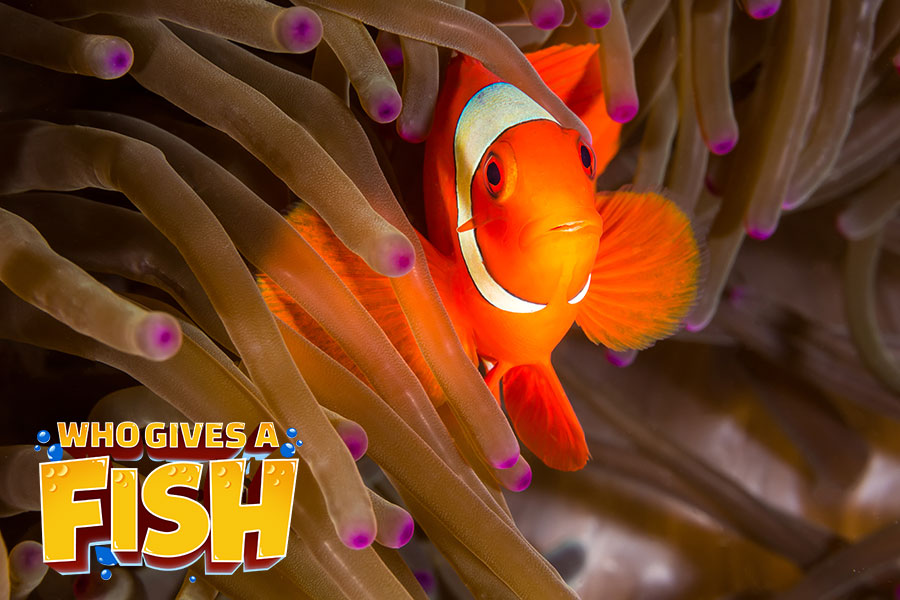
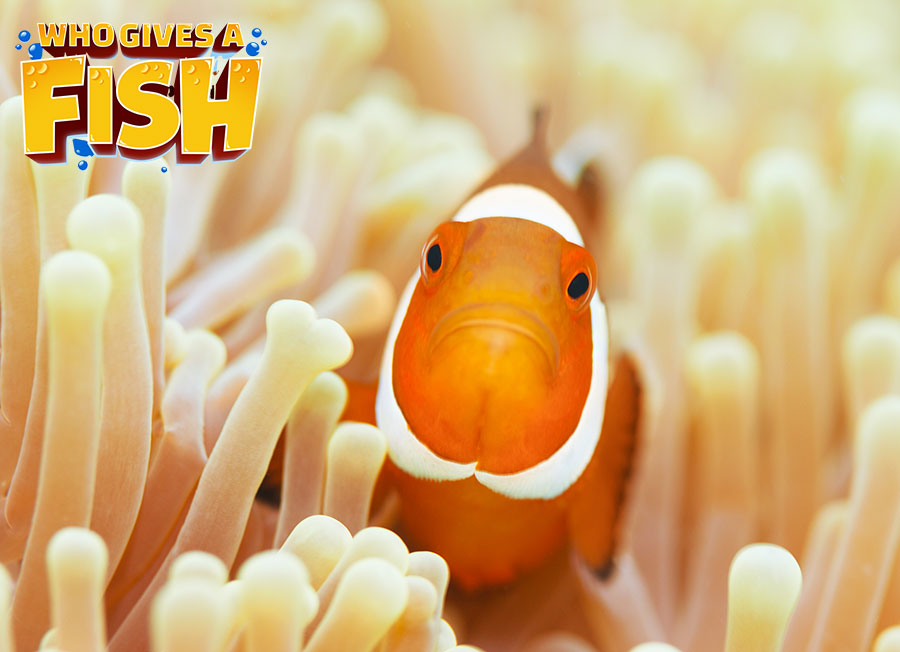
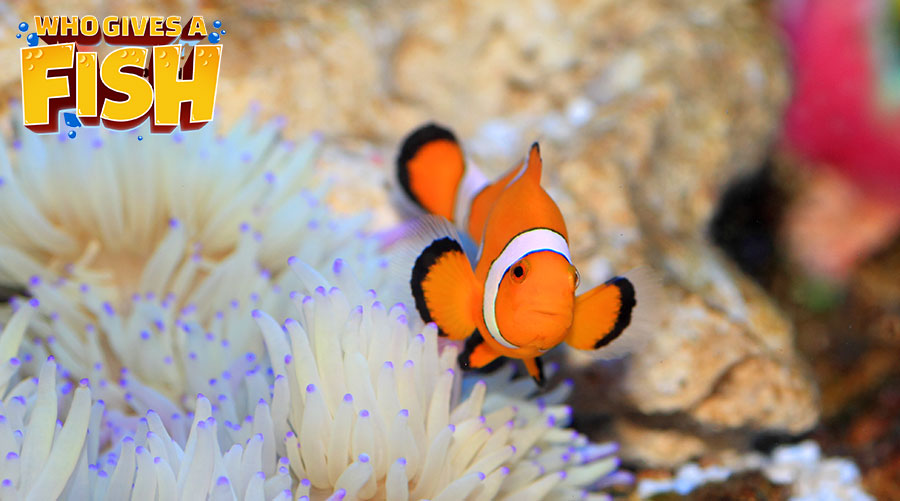
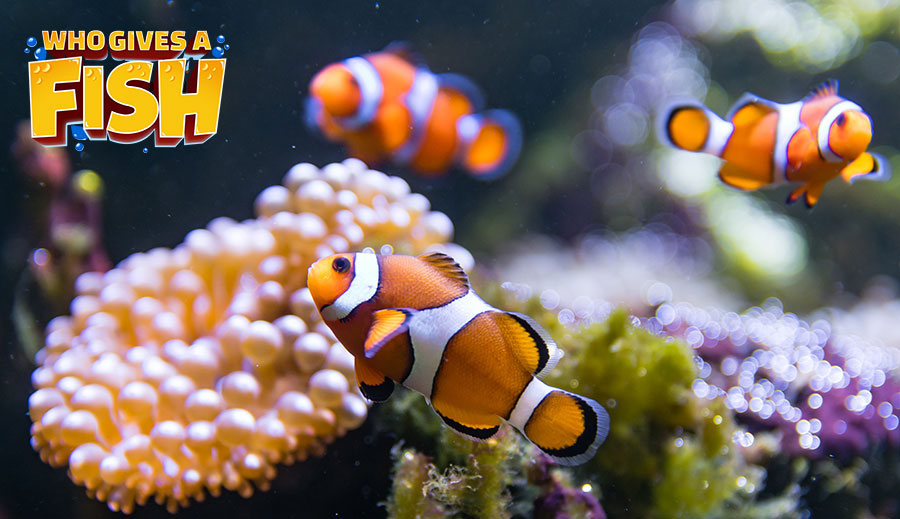
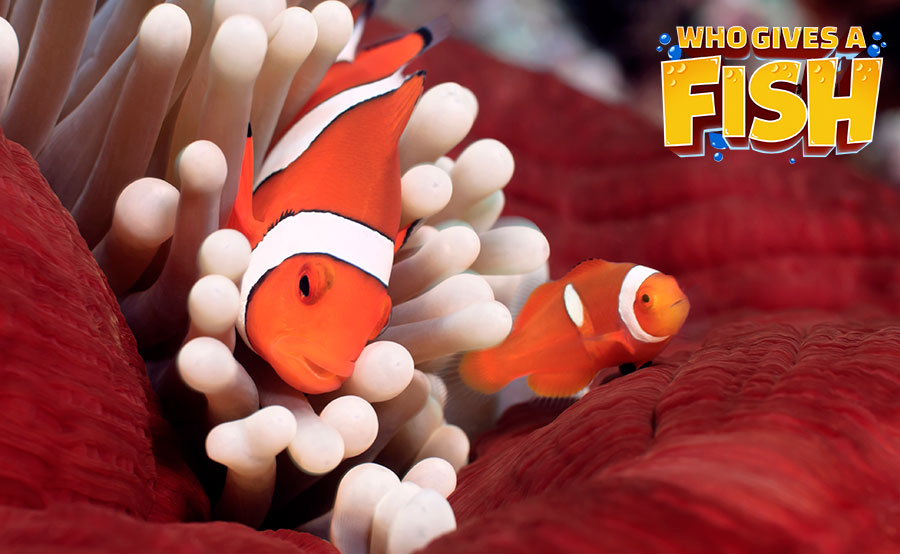
Social
The Ocellaris Clownfish is referred to as semi-combative, however are one of the least combative of the clownfish species. Like all damselfish, they will get touchier as they mature. When housed as a male/female couple with an anemone, their hostility level will rise, but is still less so than other clowns. Just like any other clownfish, they feel home in a reef environment, but also thrive in a fish only setting. In general, these are a more placid little fish and should be housed with equally placid creatures. If housing it in a small tank, 55 gallons or less, and devoid of an anemone, do not keep it with any semi-combative or hostile fish. With an anemone on the other hand, they can tolerate semi-combative fish, just not fish big enough to devour it.
Do not keep this Clownfish with breeds of clowns from the Maroon complex, the Clarkii complex or the Tomato (Ephippium) complex, as these sorts of clownfish are too hostile to be housed with other clowns, or even each other.
Compatibility with other Clownfish:
Clownfish will produce around 2 to 17 clicks in a series when being assault or in attacking manner. They will often generate chirps directed at bigger fish, and pops directed at lesser fish that are discernible to aquarists or even divers. They are genuinely quiet when mating. Pops are heard in groups of one or two, prior to a chirp noise, so they may be having two different conversations.
They utilize their teeth to generate the sound, and the jaws are the built in megaphone, so it is possible that the sounds may vary from clownfish breed to breed, kind of like an accent or dialect. There are a total of 29 clownfish that generate discernible noises, with some more distinguished than others. The loudest three are the Pink Skunk Clownfish, the Clark’s Clownfish and the Tomato Clownfish.
The behaviors among the same breed of clownfish are easy to identify and are very interesting. Frequent dominant exhibitions by a female inhibits a male from altering his sex. A hostile clownfish will exhibit antagonistic behavior whereas the subservient clown will exhibit appeaser behavior. The hostile fish has special actions in which the submissive clownfish reacts to:
If the hostile fish, which is generally the female, will begin chirping and chase the subservient clownfish, which can be a sub adult or male, and will quickly quiver their body as they float upward and they will generate clicking noises.
Jaw cracking by the hostile clownfish often results in the subservient clownfish thrashing their head or body.
Ventral leaning by the aggressive clownfish results in the subservient clownfish quivering. A hostile clownfish exhibiting a dorsal leaning results in the subservient clownfish exhibiting ventral leaning.
Compatibility in a mini reef:
In a reef environment, clownfish fit in nicely, particularly with a host anemone. Clownfish will generally not hassle any corals, except for picking algae off the bottom of a coral that they have embraced as a host. A host anemone will supply a rich, natural setting for your clown. While other fish tend to steer clear of the anemones stinging tentacles, so as not to become its food, your clown fish will spend a majority of its time relaxing in it. Although sea anemones are a stunning addition to any reef setting, they are more difficult to tend. If you elect to keep an anemone you must ensure sure its special requirements are met.
They have been noted to assume alternate hosts, like certain hairy mushroom corals (corallimorphs), large polyped stony corals (LPS), or even fibrous algae if present. Be careful with the Giant Cup Mushroom, Amplexidiscus fenestrafer, or Elephant Ear Mushroom as it has been known to snare and eat young clownfish and should be watched closely.